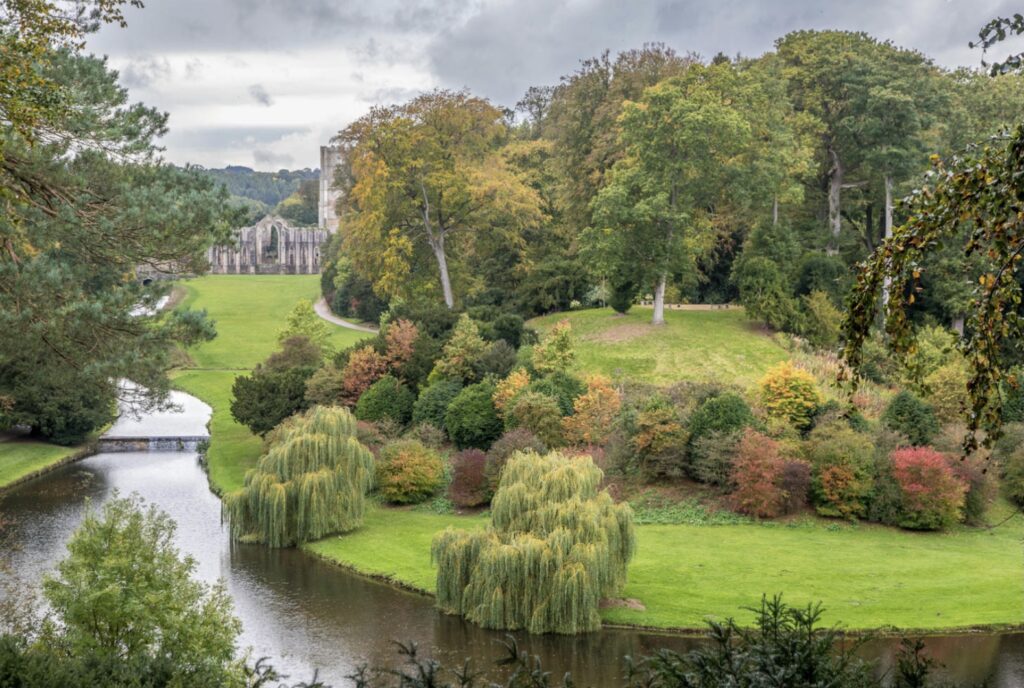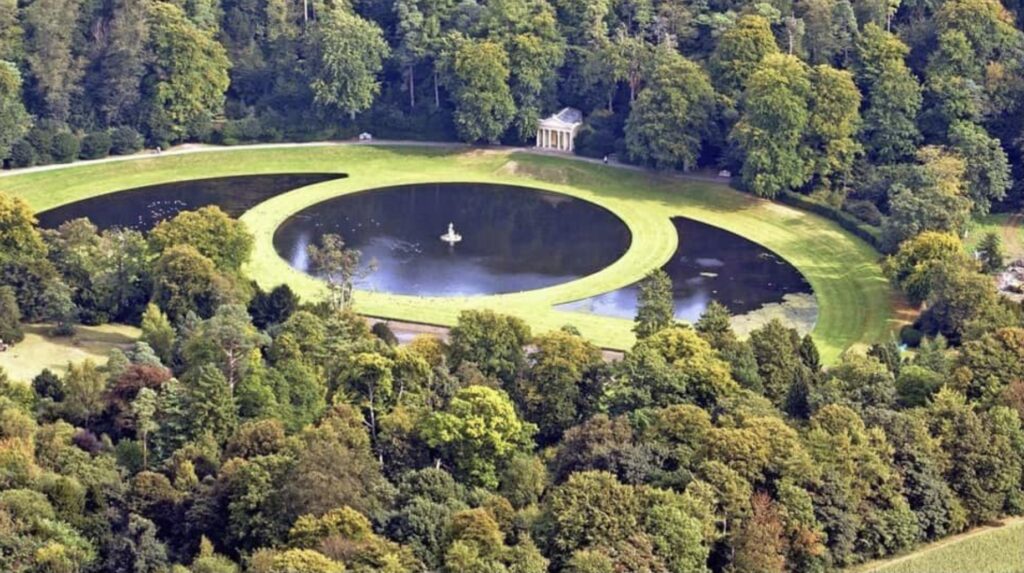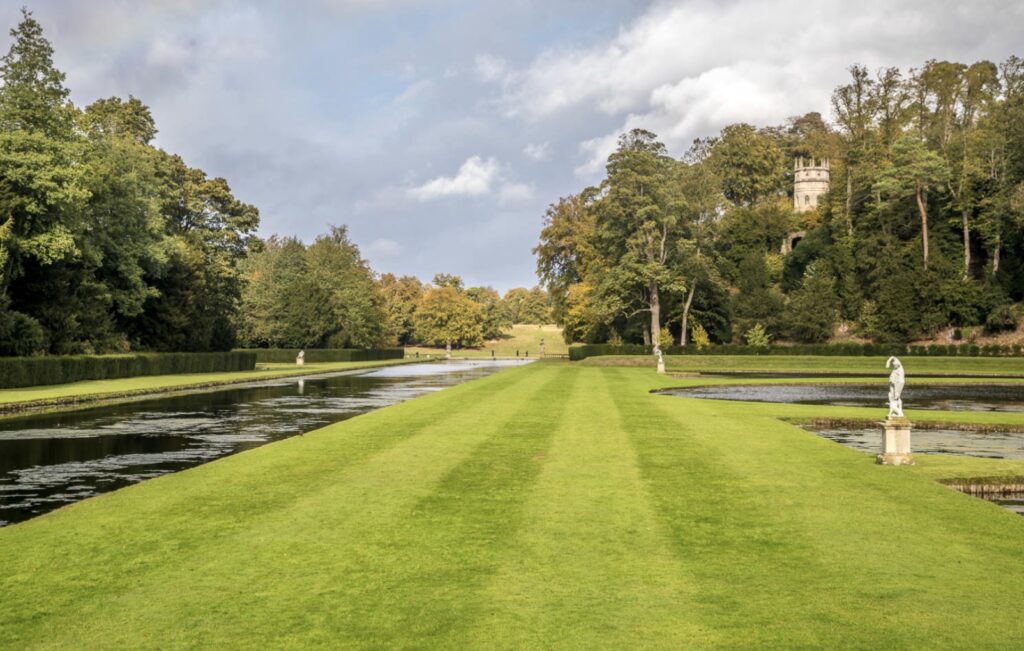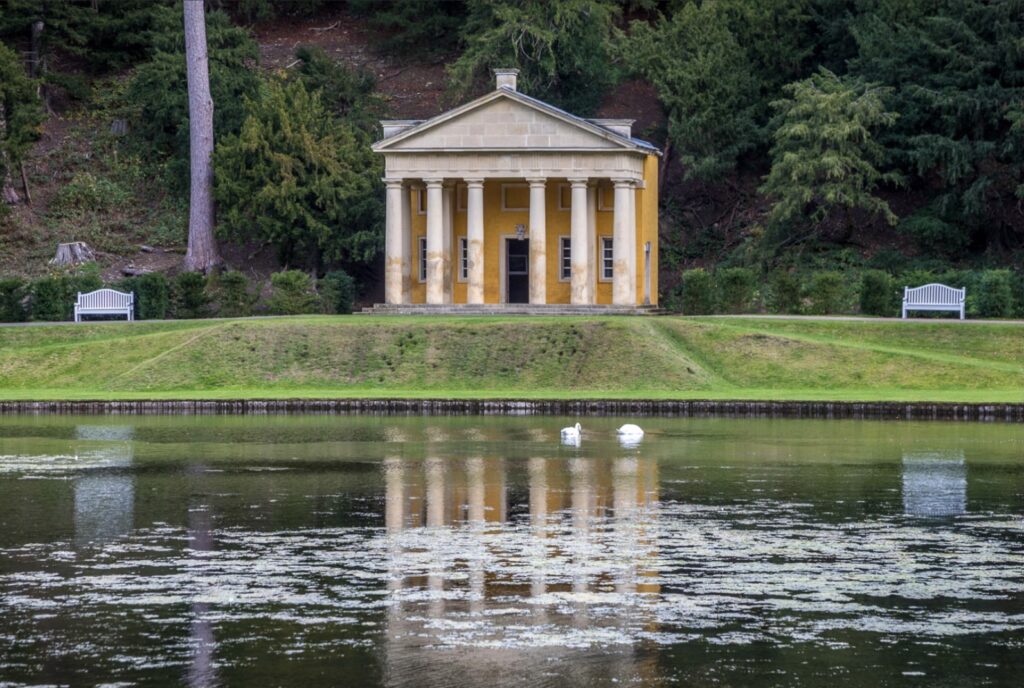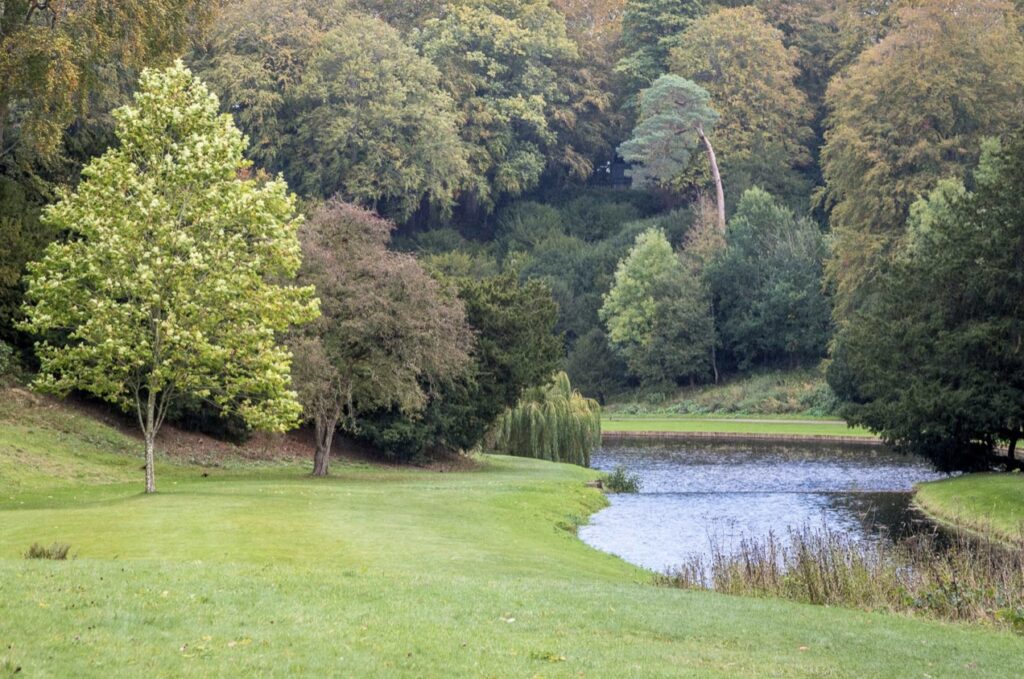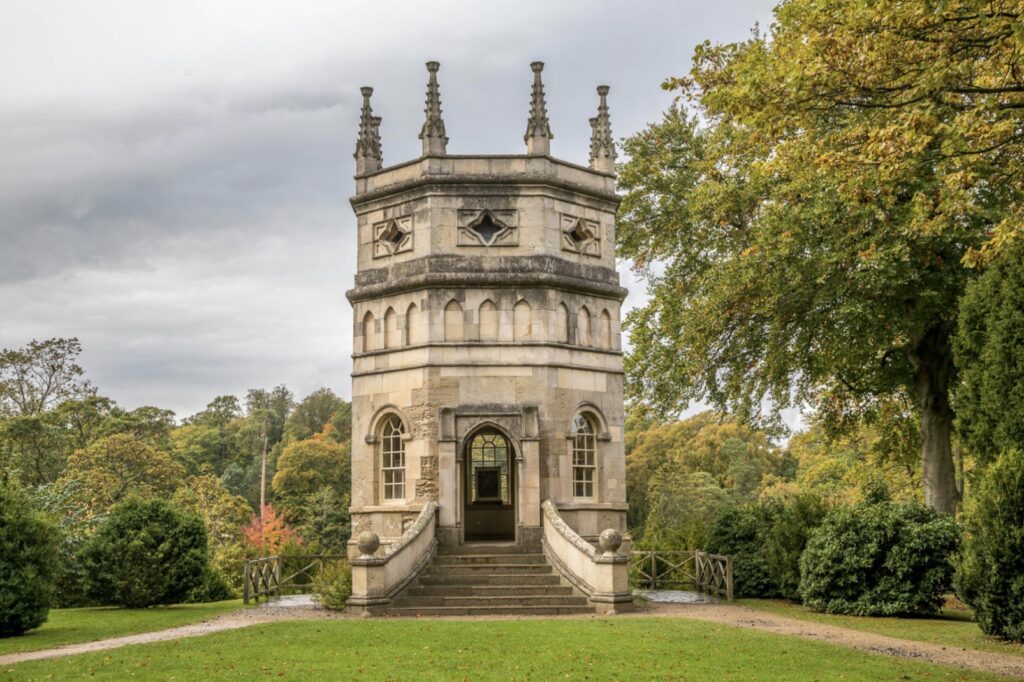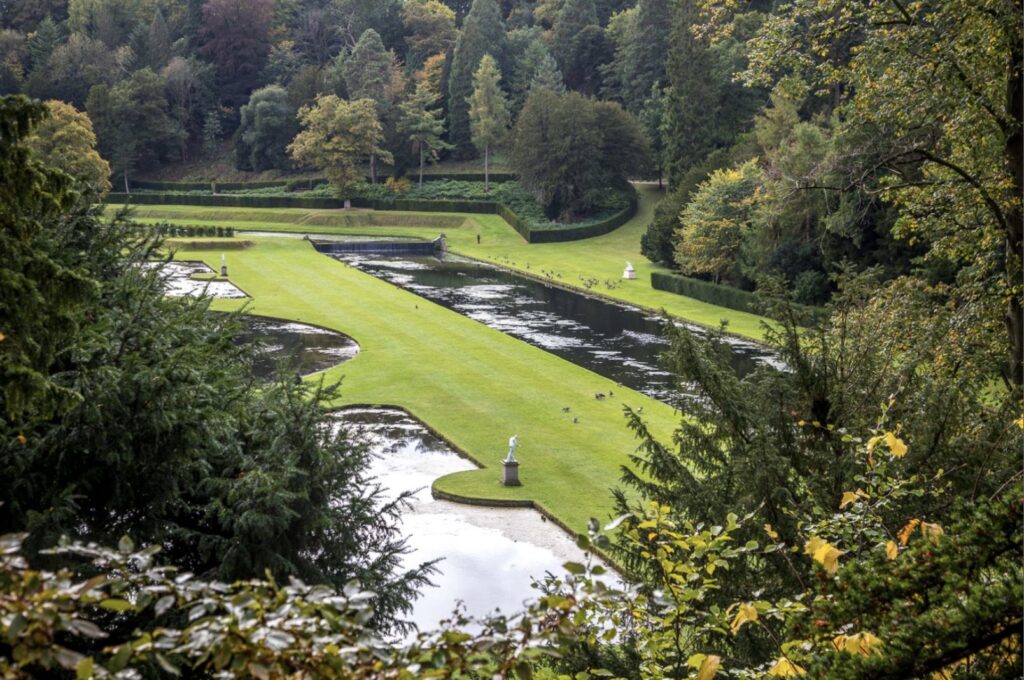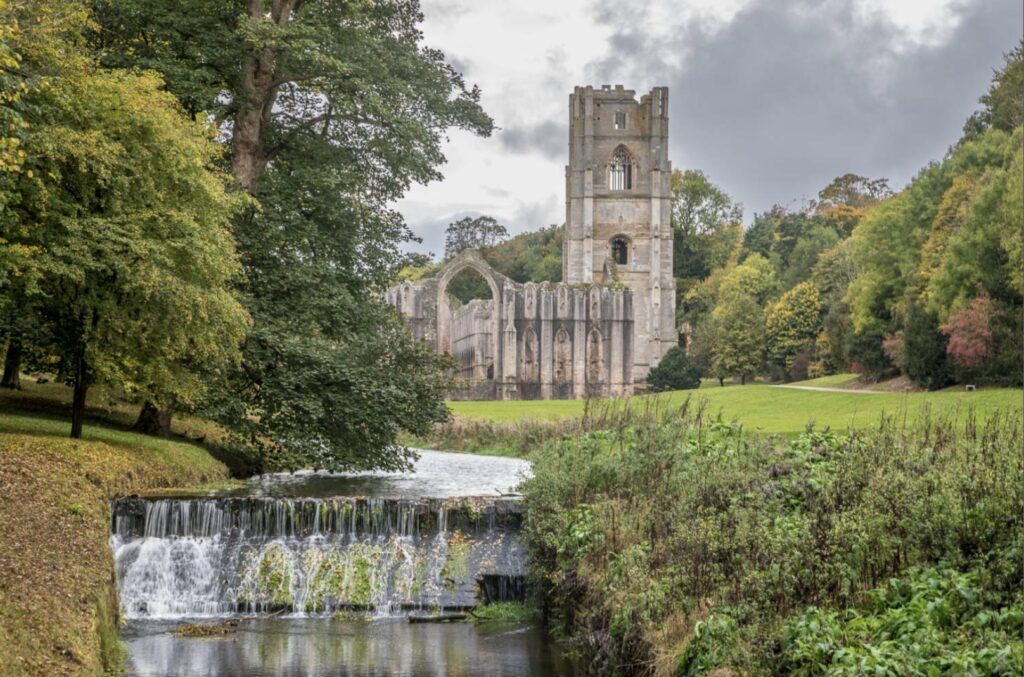ChatGPT:Fountains Abbey, located in North Yorkshire, England, is one of the largest and best-preserved Cistercian monasteries in the country. Founded in 1132, it operated for over 400 years until the Dissolution of the Monasteries in 1539. The site features impressive ruins, including the abbey church, cloisters, and the chapter house. Adjacent to the abbey are the beautiful Studley Royal Water Garden, an 18th-century landscaped garden with ornamental lakes, canals, temples, and statues. The entire estate, managed by the National Trust, is a UNESCO World Heritage Site and offers visitors a glimpse into medieval monastic life amid stunning natural surroundings.
Fountains Abbey has a rich history, beginning with its foundation in 1132 when 13 dissident monks from St Mary’s Abbey in York sought to live a more devout and austere life. They were given land in the valley of the River Skell by Archbishop Thurstan of York, and within three years, they had joined the Cistercian order, known for its strict adherence to the Rule of St. Benedict and emphasis on manual labor and self-sufficiency.
Early Development (1132-1200)
- 1132-1135: The monks built temporary structures to live and worship in while they began constructing the abbey. The harsh early years were marked by hardship and poverty.
- Mid-12th century: Under the leadership of Abbot Richard, substantial development occurred. The abbey church, a grand Romanesque structure, and various monastic buildings were constructed.
- Late 12th century: The abbey prospered, acquiring land and establishing granges (farming estates) to support its growing community.
Height of Prosperity (1200-1300)
- Early 13th century: Fountains Abbey became one of the wealthiest monasteries in England, thanks to wool production and trading. The community grew to include over 60 monks and 300 lay brothers.
- 1236: Major construction projects included the expansion of the abbey church and the building of the infirmary, reflecting the abbey’s prosperity.
Challenges and Changes (1300-1500)
- 14th century: The abbey faced several challenges, including the Black Death, which reduced the population of lay brothers, and the Scottish raids that damaged the abbey’s estates.
- 15th century: Despite these challenges, the abbey continued to be an important religious and economic center. The monks adapted by leasing their lands and focusing more on sheep farming.
Dissolution and Ruin (1539-present)
- 1539: During the Dissolution of the Monasteries under Henry VIII, Fountains Abbey was closed, and its lands were seized by the Crown. The abbey buildings were stripped of valuable materials, and the community was disbanded.
- Post-dissolution: The site passed through various owners and fell into ruin. In the 18th century, it was incorporated into the Studley Royal estate by John Aislabie, who created the Studley Royal Water Garden, integrating the abbey ruins into the landscape.
- 1983: Fountains Abbey and Studley Royal Water Garden were designated a UNESCO World Heritage Site, recognizing their historical and architectural significance.
- Present: Managed by the National Trust, Fountains Abbey is a major tourist attraction, offering visitors a glimpse into the past through its well-preserved ruins and beautiful gardens.
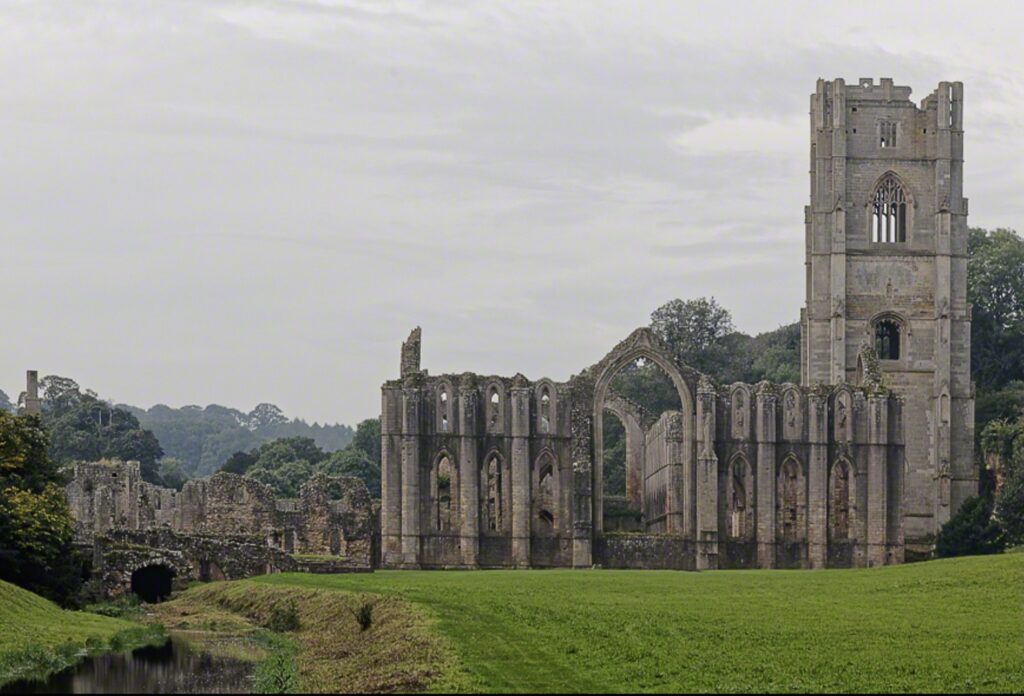
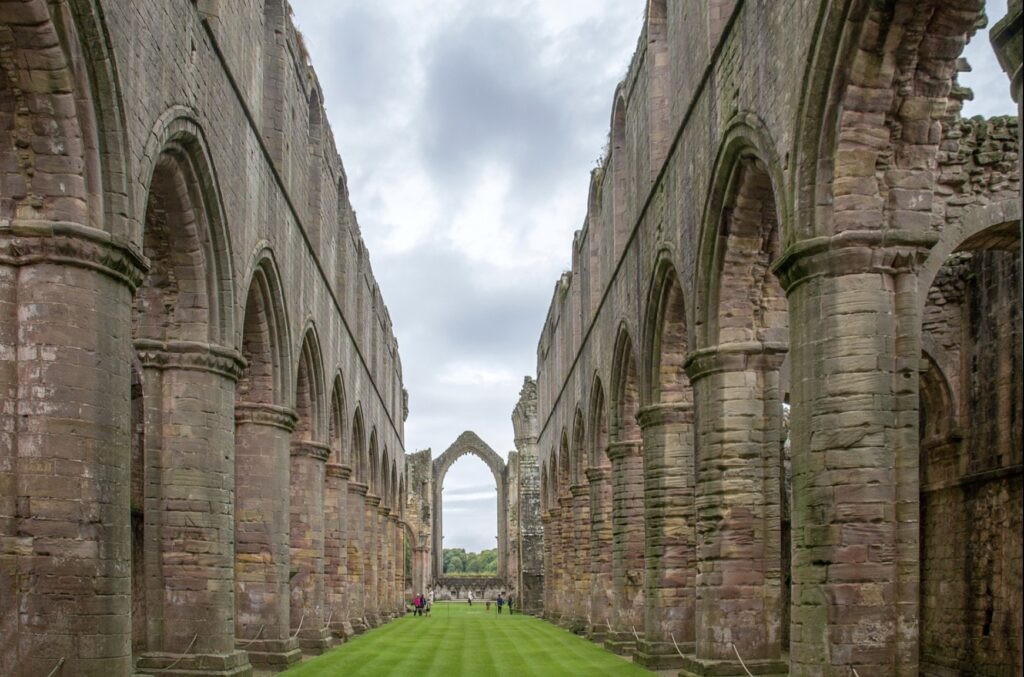
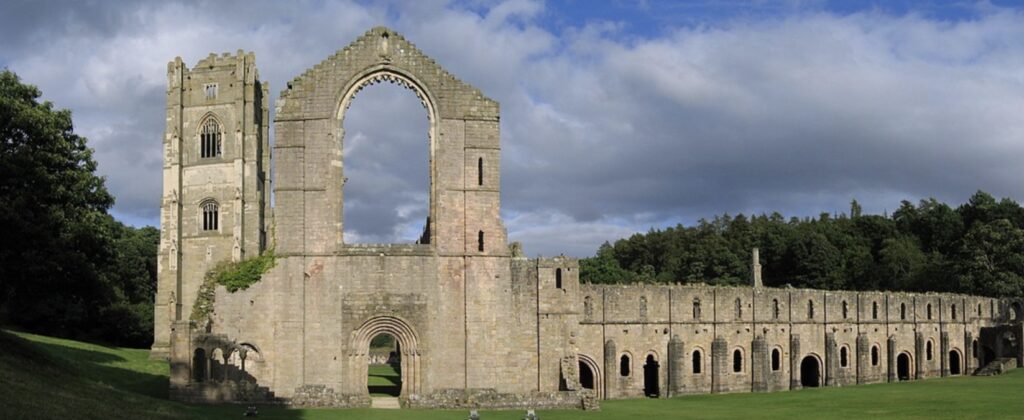
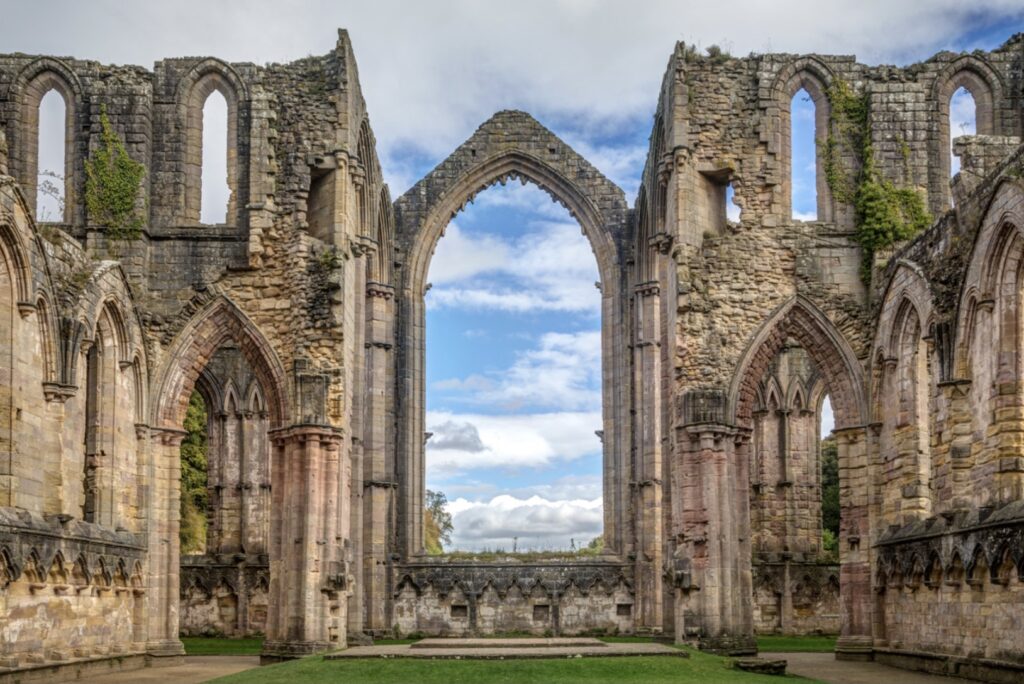
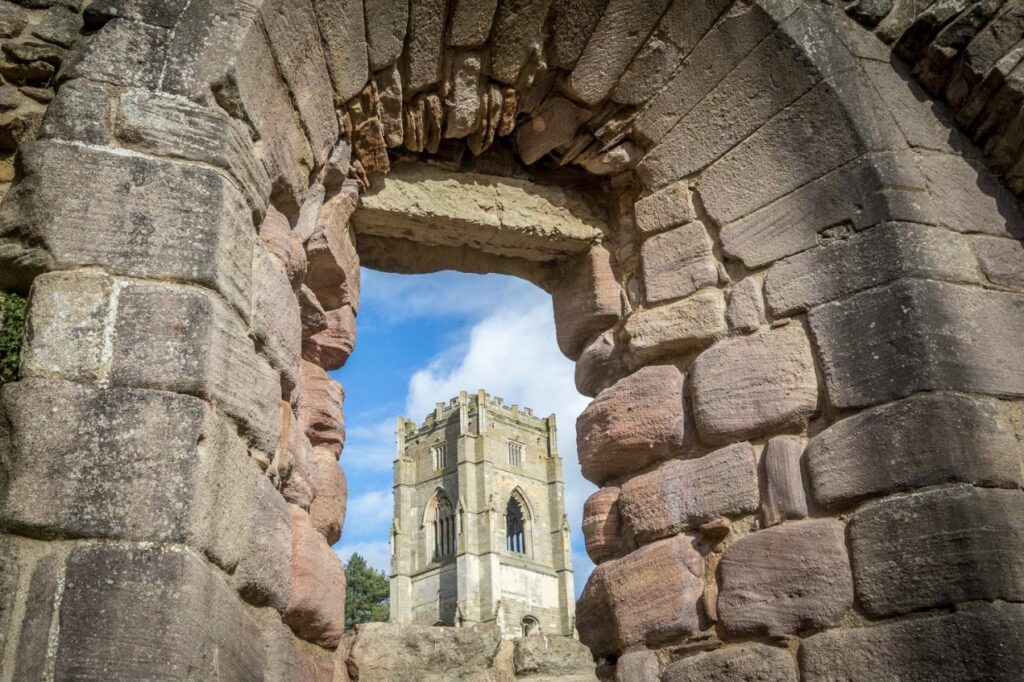
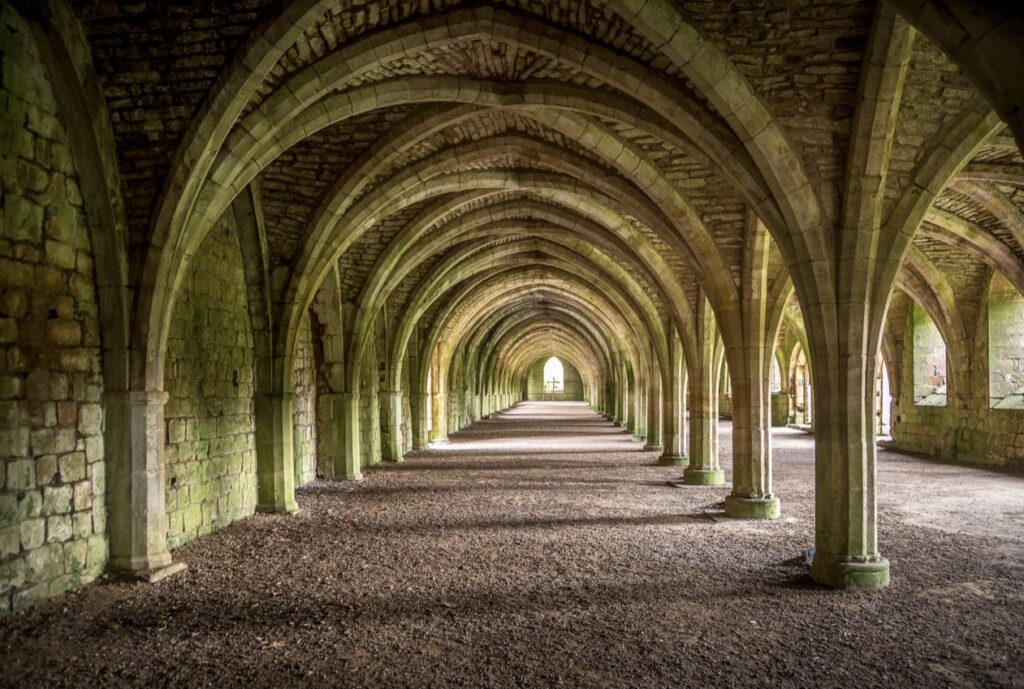
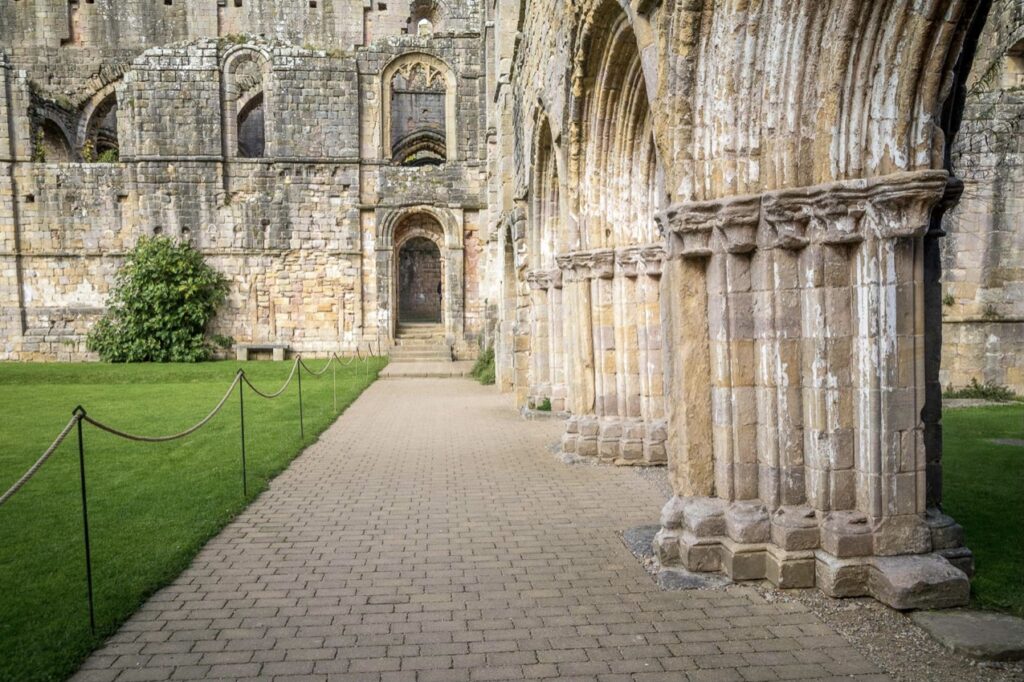
The ruins of Fountains Abbey include several well-preserved buildings that give insight into the monastic life of the Cistercian monks. The key remaining buildings and structures are:
- Abbey Church: This large and impressive structure includes remnants of the nave, transepts, and choir. The tower, added in the 15th century, is particularly notable.
- Cloisters: The long, vaulted cloisters provided a covered walkway for the monks and connected the main parts of the abbey.
- Chapter House: A beautifully vaulted room where the monks would gather daily to discuss the business of the abbey and read a chapter of the Rule of St. Benedict.
- Refectory: The dining hall where the monks ate their meals in silence while listening to readings.
- Cellarium: This extensive, vaulted area under the refectory served as a storage place for food and other supplies.
- Warming House: One of the few heated rooms in the abbey where the monks could warm themselves.
- Infirmary: A building where sick or elderly monks were cared for. Parts of the infirmary complex still stand.
- Dormitory: The sleeping quarters for the monks, of which substantial parts remain.
- Guest House: Used to accommodate visitors to the abbey, remnants of this building still exist.
- Abbot’s House: A more private residence for the abbot, parts of which are still visible.
- Lay Brothers’ Quarters: Separate accommodations for the lay brothers who performed much of the manual labor. Some structures remain.
These ruins offer a glimpse into the daily life and architectural grandeur of the abbey during its height before its dissolution in the 16th century.
Studley Royal Water Garden, adjacent to Fountains Abbey, is an exceptional example of an 18th-century English water garden. Created by John Aislabie and later expanded by his son William, the garden is renowned for its harmonious blend of natural and man-made features. Here are some of its special features:
Key Features
Water Features
- Canals and Ponds: The garden features a series of formal canals, serene ponds, and cascades that guide visitors through the landscape. The water elements create reflective surfaces and add a sense of tranquility.
- Moon Ponds: These circular ponds are a focal point, surrounded by meticulously maintained lawns and framed by classical statues.
Architectural Elements
- Temples and Follies: Scattered throughout the garden are various classical structures, including the Temple of Piety, Octagon Tower, and the Temple of Fame. These add historical and architectural interest to the landscape.
- Bridges: Elegant stone bridges cross the waterways, enhancing the picturesque views and providing vantage points for observing the garden’s layout.
Statues and Ornaments
- Classical Statues: Statues of mythological figures, such as Neptune and Hercules, are strategically placed around the garden, contributing to its classical theme and adding points of interest.
- Urns and Vases: Decorative urns and vases are placed along pathways and near water features, enhancing the formal aesthetic of the garden.
Woodlands and Lawns
- Wooded Areas: The garden includes areas of mature woodland, providing shade and a natural counterpoint to the more formal elements. These areas are interspersed with pathways, inviting exploration.
- Lawns and Flowerbeds: Expansive lawns and carefully designed flowerbeds add color and texture to the garden, particularly in the spring and summer months.
Views and Vistas
- Designed Vistas: The garden’s design creates a series of planned vistas, framing views of the abbey ruins, water features, and architectural elements. This thoughtful layout allows visitors to appreciate the beauty of the garden from multiple perspectives.
Historical Context
- 18th-Century Design: The garden is a quintessential example of 18th-century landscape design, reflecting the tastes and ideals of the Georgian period. Its creation marked a shift towards more naturalistic and picturesque garden styles.
- Integration with Fountains Abbey: The garden’s design intentionally incorporates views of the Fountains Abbey ruins, creating a dramatic and romantic juxtaposition between the manicured garden and the ancient monastic structures.
Modern Management
- National Trust: Today, the National Trust manages Studley Royal Water Garden, ensuring its preservation and maintenance. The garden is part of the Fountains Abbey and Studley Royal Water Garden UNESCO World Heritage Site, highlighting its cultural and historical significance.
Overall, Studley Royal Water Garden is a masterpiece of landscape architecture, offering a serene and visually stunning environment that continues to captivate visitors with its blend of natural beauty and classical elegance.
